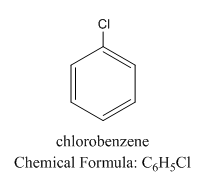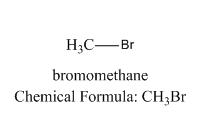
Answer
422.1k+ views
Hint: We know that the aryl halides are more stable than the alkyl halide and the reason for this is that aryl halide has a resonating structure. An alkyl halide does not show resonance hence less sable.
Complete answer:
Let us see the structure of aryl halide:

Now let us see the structure alkyl halide:

Now, let us see why aryl halide is less reactive than alkyl halide towards nucleophilic substitution:
We know that the hybridization of carbon in alkyl halide is \[s{p^3}\] .
Now, \[s{p^3}\] hybridization means the bond between carbon and halogen is less electronegative.
As the bond is less electronegative it will require less energy to break the bond and the reaction can proceed easily.
We also know that the hybridization of carbon in aryl halide is \[s{p^2}\] .
Now, \[s{p^2}\] hybridization means the bond between carbon and halogen is more electronegative.
As the bond is more electronegative it will require high energy to break the bond.
We also know that the lower the polarity of the bond lower is the reaction toward the nucleophile.
And the polarity between the carbon and halogen in alkyl halide is higher than the polarity between the carbon and halogen in aryl halide.
So, alkyl halide is more reactive than aryl halide towards nucleophilic substitution.
Therefore, we can conclude that the correct answer to the question option B and option E.
Note: We know that the aryl compound contains an aromatic ring and hence it has the resonance stabilization energy associated with it while the alkyl contains the open-chain compounds so resonance role will not be possible in alkyl halide.
Complete answer:
Let us see the structure of aryl halide:

Now let us see the structure alkyl halide:

Now, let us see why aryl halide is less reactive than alkyl halide towards nucleophilic substitution:
We know that the hybridization of carbon in alkyl halide is \[s{p^3}\] .
Now, \[s{p^3}\] hybridization means the bond between carbon and halogen is less electronegative.
As the bond is less electronegative it will require less energy to break the bond and the reaction can proceed easily.
We also know that the hybridization of carbon in aryl halide is \[s{p^2}\] .
Now, \[s{p^2}\] hybridization means the bond between carbon and halogen is more electronegative.
As the bond is more electronegative it will require high energy to break the bond.
We also know that the lower the polarity of the bond lower is the reaction toward the nucleophile.
And the polarity between the carbon and halogen in alkyl halide is higher than the polarity between the carbon and halogen in aryl halide.
So, alkyl halide is more reactive than aryl halide towards nucleophilic substitution.
Therefore, we can conclude that the correct answer to the question option B and option E.
Note: We know that the aryl compound contains an aromatic ring and hence it has the resonance stabilization energy associated with it while the alkyl contains the open-chain compounds so resonance role will not be possible in alkyl halide.
Recently Updated Pages
How many sigma and pi bonds are present in HCequiv class 11 chemistry CBSE

Mark and label the given geoinformation on the outline class 11 social science CBSE

When people say No pun intended what does that mea class 8 english CBSE

Name the states which share their boundary with Indias class 9 social science CBSE

Give an account of the Northern Plains of India class 9 social science CBSE

Change the following sentences into negative and interrogative class 10 english CBSE

Trending doubts
Difference Between Plant Cell and Animal Cell

Difference between Prokaryotic cell and Eukaryotic class 11 biology CBSE

Fill the blanks with the suitable prepositions 1 The class 9 english CBSE

Differentiate between homogeneous and heterogeneous class 12 chemistry CBSE

Which are the Top 10 Largest Countries of the World?

One cusec is equal to how many liters class 8 maths CBSE

Give 10 examples for herbs , shrubs , climbers , creepers

The mountain range which stretches from Gujarat in class 10 social science CBSE

The Equation xxx + 2 is Satisfied when x is Equal to Class 10 Maths



